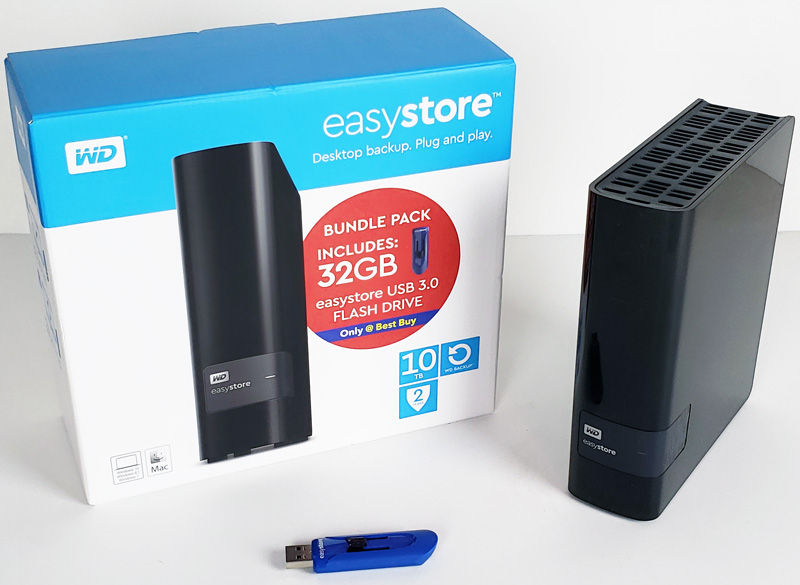jcl123
Dabbler
- Joined
- Jul 6, 2019
- Messages
- 23
If you have the Server 2019 licenses already it can certainly help tilt things that way. Since your workload is mostly read as well we can try to violate a few of the other "best practices" in regards to block storage as well.
It's a good point, I often forget that the pricing for Server 2019 is a bit prohibitive.
Although you can run them in eval mode unrestricted for a very long time, years.
Note that, I am not looking to violate best practices if I don't have to.
No problem. Given the specs, I have my suspicions that a "certain brand of storage" was recently decommissioned at your office, and you were permitted to benefit from that once the drives were erased. ;)
Yeah, actually I was the one who had to decommission it. We were just going to destroy all the disks, but my boss said I could keep some as long as I wipe them. I had to change the sector format and long-format them anyway so easy enough.
Quick ZFS phrasing lesson - the "pool" is the top level aggregate, which in turn is made up of vdevs. Think of "vdevs" as the "5" in a RAID50 arrangement, and the "pool" that mashes them together being the "0" piece of it. More details on that front later.
Right, sorry, still don't have all the terminology down. VDEV is a disk and "pool" is an array of disks, right? Not sure I follow your RAID50 explanation.
This would be a good solution; a RAIDZ2 pool with a ZVOL (think "a piece of your ZFS pool") provisioned over iSCSI as either an RDM through VMware, or direct in-guest iSCSI (although the latter might complicate the network layout) and leave it async. The main OS drive would be on your (sync) VMFS.
Well, I really hate using RDM's, and I doubt FreeNAS supports vVols.
I am much happier going to the guest, I have extensive networking experience but I don't even think this is that hard.
I won't discourage the use of dedup in Windows either. The current state of dedup on ZFS is basically "don't" - there's some work in progress to correct this but as of now it's inline and extremely memory heavy. The upcoming special vdev type that will be there in TrueNAS 12 helps mitigate this but it doesn't change the core methodology of how it works.
Yeah, even high-end EMC SAN's don't do real-time dedup very well, and they are almost cost unlimited.
The only thing I have seen do it real-time "well" would be HPe Simplivity, but it is doing it with custom hardware.
There is no magic to the Windows implementation, it's just not real-time / idle time.
Sync can be set at the pool, dataset, or individual ZVOL level; so you can even have different levels of data assurance and power-loss-protection within the same system.
OK, good to know.
You'll likely need a second controller anyways, since the proper way to do FreeNAS as a VM involves PCI passthrough of the HBA entirely to the VM, and you need a storage device visible to VMware in order to store and boot the FreeNAS VMX.
Yeah, I am getting pretty frustrated with this. All the LSI one's are really expensive, especially with the flash cache.
I am actually currently looking at the Adaptec stuff, which is pretty nice and there are some good deals.
I need something somewhat new to support ESXi 7.x
I suppose I could put the on-board LSI back into IR mode since I only need RAID 1. Then use the extra LSI 9400 HBA for FreeNAS.
Question; how many of the different drives (SSD and 4T SAS) have you got? That can impact your pool decisions.
Here are the details:
I have 5-6 of these:
400Gig 2.5" U.2 NVMe SSE Seagate Nytro ST400KN0001 MK000400KWDUK
3 DWPD, PLP, 2400MB/s Read, 500MB/s Write, 55K -180K IOPS
I have around 18 of these:
200Gig 2.5" 6Gig SAS Samsung SM1625 MZ6SR200HMFU-000C3 MZ-6SR2000/OC3 (I think these are SLC)
10 DWPD, PLP, 500MB/s Read/Write
https://www.servethehome.com/samsung-sm1625-200gb-sas-ssd-quick-benchmarks/
I have around 40 of these:
400Gig 2.5" 6Gig* SAS WD/HGST HUSMM1640ASS204 0B32172
10 DWPD/5 years, PLP, 500MB/s Read/Write
(*12Gig SAS but firmware locked to 6Gig)
I have over 60 of these:
4TB 3.5" 7200RPM SAS Seagate ST4000NM0023
I have 7 of these:
10TB 3.5" WD100EMAZ6Gig SATA
These are WD RED NAS drives that I "shucked" from external USB drives

WD WD100EMAZ and WD Easystore 10TB External Backup Drive Review
We attempt to answer the burning question of whether the WD100EMAZ (Easystore white label) is the same as the WD100EFAX (WD Red) 10TB hard drive.
Now, before you get all kinds of ideas, I grabbed way too many of these, not sure what I was thinking.
The case I have can hold 16x 3.5" (single expander backplane) + a fair number of 2.5" drives.
I don't even really want to fully populate this thing if I don't have to, just because of power, noise, and heat.
Technically I also have the JBOD which can hold another 10, but I don't want to hit 26 drives.
Actually I was thinking the JBOD might be good for a cold backup copy.
I have dummy drive blanks so I could leave some slots unpopulated.
And for a guess:
Your 200G drives are Samsung SM1625's
Your 400G drives are Seagate 1200's
Your 4T drives are Seagate Constellation ES (1st gen)
And your NVMe drives are P3608 (but I'm unsure)
Let me know how many I get. ;)
You definitely got the 1st one, maybe not the 2nd one, not sure about the 4T's.
Actually I was wrong about the NVMe's, I thought they were Intel.
-JCL
